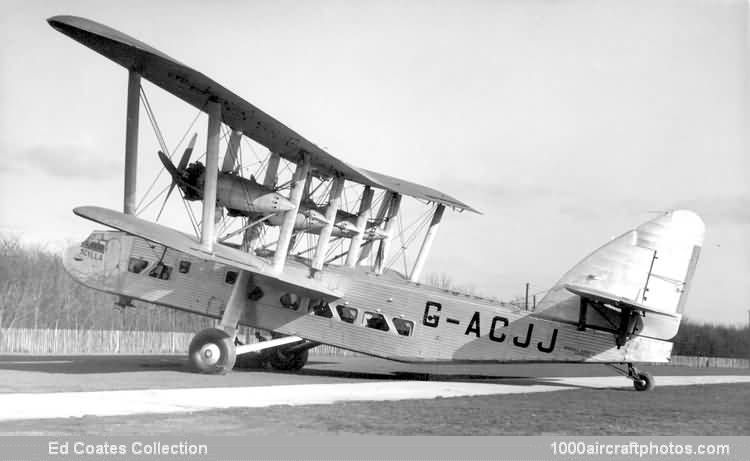03/15/2020. Remarks by Johan Visschedijk: "Early in 1933 Imperial Airways, due to accidents and increasing traffic, was extremely short of aircraft for its European routes. At that time there were no British production lines from which to order small numbers of proven aircraft. The airline tried to buy two more Handley Page H.P.42W aircraft but without success and therefore asked Short Brothers to build a landplane version of the Short S.17 Kent flying boat which the airline was using.
The new landplanes were to use the wings, engines, engine mountings and tail unit of the Kent combined with a new high-capacity fuselage and land landing gear. Short designated the 'new' aircraft as the S.17/L (for S.17 land plane) but later simplified this to L.17. The fuselage mock-up for a 38-passenger landplane was approved in April 1933 and two examples were ordered, to be powered by four 555-hp Bristol Jupiter XF.BM nine-cylinder air-cooled radial engines.
The fuselages were of rectangular section and wide enough to contain pairs of seats on each side of a central aisle. In order to save time a braced structure with unstressed corrugated metal skin was adopted, and it was hoped that the two aircraft could go into service early in 1934. Because of lack of facilities, the two large biplanes had to be erected in the open; high winds and low temperatures delayed completion, but on March 26, 1934, the first aircraft, registered G-ACJJ and later named Scylla, made its first flight with J. Lancester Parker at the controls. The second example flew on May 17, the day after Scylla had made its first London-Paris service flight.
Passenger accommodation was divided into three cabins and there were two lavatories and a steward's pantry. With the lower wing attached to the top of the fuselage the L.l7s sat at quite a steep ground angle which made them vulnerable in strong winds. In the summer of 1935 Syrinx had its two inboard Jupiter engines replaced by 540 hp Bristol Perseus IIL nine-cylinder air-cooled sleeve-valve units but that November the aircraft was blown on its back by a gale after which it was rebuilt with four 660 Pegasus XC engines, as used in the C class flying boats, and its cabins used as trial mockups for those with seating increased to 39.
When the war started the L.l7s were put to work on National Air Communications but Scylla was overturned and wrecked in a gale at RAF Drem, Scotland, on April 15, 1940. Syrinx had already been withdrawn from use on December 17, 1939 and its fuselage served as offices at Exeter Airport.
